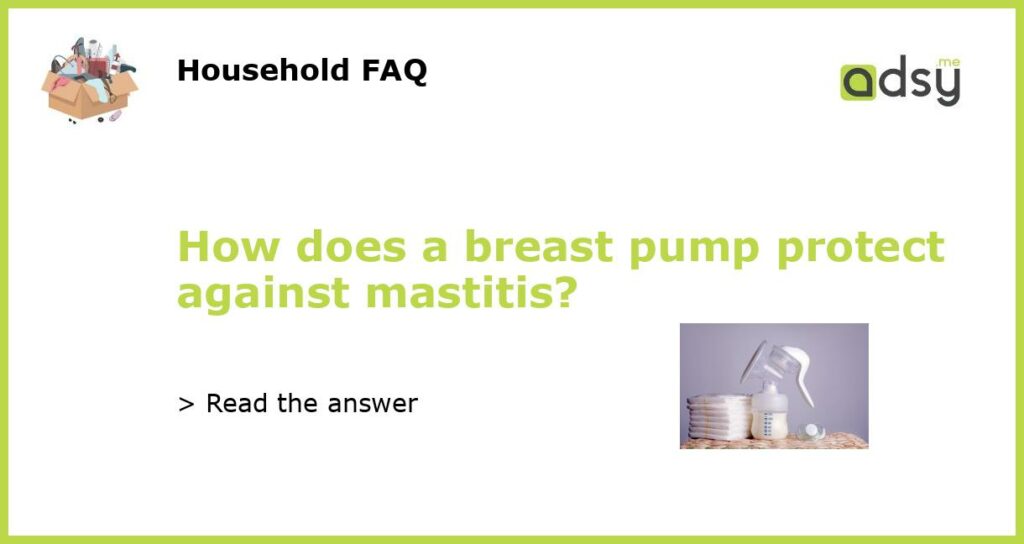Understanding Mastitis
Mastitis is an inflammation of breast tissue that is caused by a bacterial infection. It is common in breastfeeding mothers who have cracked or sore nipples, as bacteria can easily enter the breast tissue through the damaged skin. Mastitis is characterized by breast pain, swelling, redness, and warmth, as well as flu-like symptoms such as fever and chills.
The Role of a Breast Pump
A breast pump is a device that helps mothers collect and store breast milk for later use. Breast pumps can also be used to stimulate and increase milk production, as well as relieve engorgement and discomfort. However, using a breast pump regularly can also help prevent mastitis.
Preventing Mastitis with a Breast Pump
When using a breast pump, the milk is extracted from the breasts and collected in a container. This not only relieves pressure and engorgement, but it also helps maintain the proper balance of milk and prevents milk from building up in the breast tissue. This is important because when milk accumulates in the breast tissue, it can lead to inflammation and bacterial growth.
Proper Pumping Techniques
To prevent mastitis, it is important to use a breast pump correctly. Mothers should make sure that the breast pump fits properly and does not cause discomfort or pain. It is also important to ensure that the pump is clean and sanitary, as bacteria can easily grow in dirty equipment.
In addition, mothers should pump regularly and frequently to prevent milk from building up in the breast tissue. It is also important to empty the breasts completely during each pumping session to ensure that there is no leftover milk that can cause inflammation.
Mastitis can be a painful and uncomfortable condition for breastfeeding mothers. However, using a breast pump can help prevent mastitis by relieving engorgement and preventing milk from accumulating in the breast tissue. By following proper pumping techniques and maintaining clean equipment, mothers can help protect themselves against mastitis and continue to provide their babies with the important nutrients found in breast milk.






